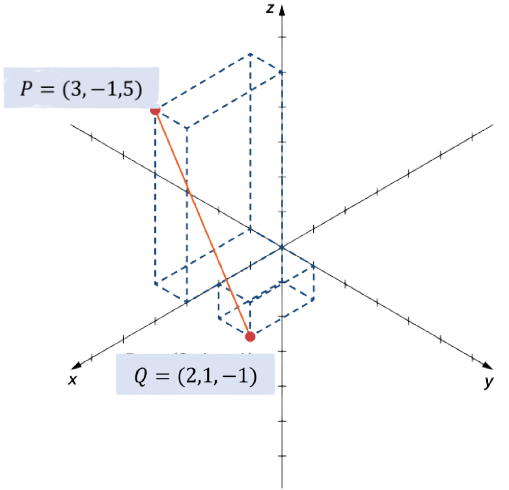Tutorial 3
Tutorial 3: Vector Algebra I
Sketch the two points and in three-dimensional space and find the distance between the two points.
Solution
Distance between the two points:
For the position vector , compute , and . Sketch all four vectors on the same axis system. Discuss the effects of scalar multiplication on the magnitude and direction of the original vector.
Solution
- The scalar multiplication affects the magnitude of vectors if the scalar is a negative value. For example, switch the direction in exactly the opposite direction.
- The scalar multiplication affects the magnitude of vectors if the scalar is not equal to 1.
- When scalar , the length of the vector is stretched. (magnitude increased)
- When scalar , the length of the vector is shrinked. (magnitude decteased)
Two vectors are given as and
i. Find the unit vector in the direction of
Solutionii. Find the direction cosines of
SolutionComparing each component, we obtain:
- For component ,
- For component ,
- For component ,
iii. Find the vector with magnitude of 5 in the direction of in polar form
SolutionDirection is in the direction of its unit vector, .
Direction is in the direction of its unit vector,
Vector of magintude 5 in the direction is .
Two points are given as and .
i. Find the vector equation of line that is passing through point and .
SolutionDirection of vector is parallel with
Vector equation of line is
ii. Sketch the line for and indicate its direction and initial point.
Solution0 1 2 3 4 5 If a unit vector makes an angle of with with and acute angle with , find and the components of .
SolutionLet to represent angles of , and .
If is a unit vector and , find .
SolutionSince is a unit vector, .
Note that magnitude of vector is non-negative.
Find the gradient for .
Solutionand
Hence
Calculate the divergence of the following vector fields of and ;
a.
Solutionb.
Solutionc.
SolutionCalculate the curl of the following vector fields of ;
a.
Solutionb.
Solutioni.e., the curl vector is in the direction.
с.
Solution